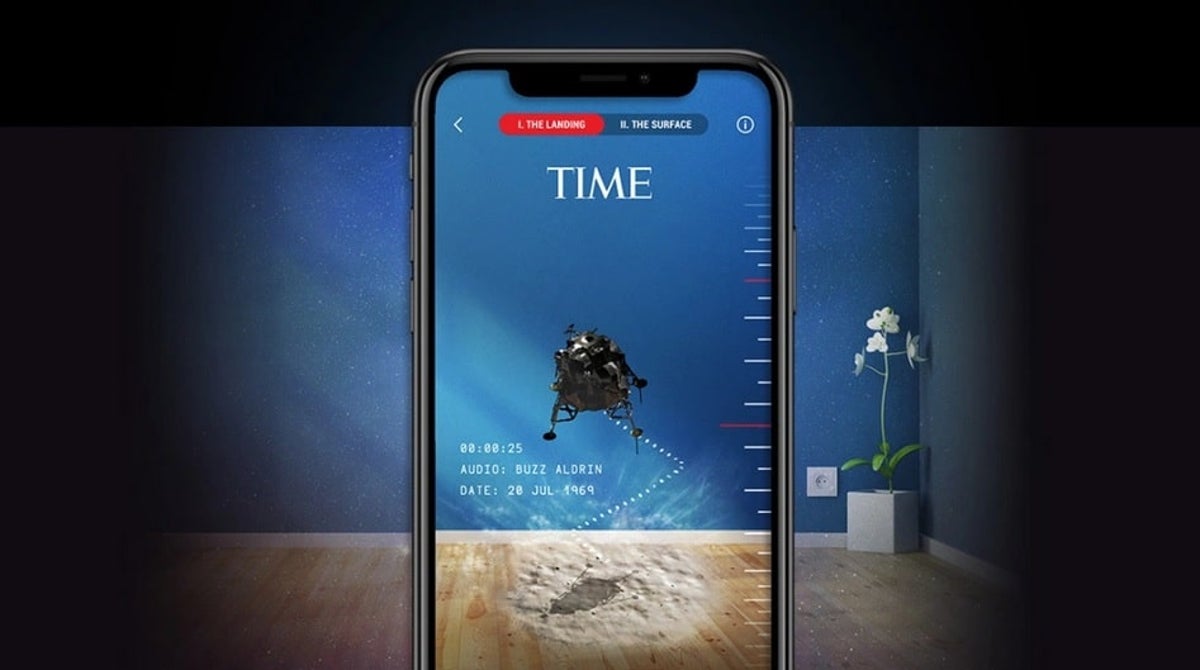Nonny de la Peña, named the ‘Godmother of Virtual Reality’, helped invent virtual journalism. With early pieces like Hunger in Los Angeles and Gone Gitmo, Nonny shone a light on the potential of immersive media to change journalism.
Talking to VFX Voice, Nonny said, “As journalists, we work to generate critical engagement, but I wanted to go beyond the reporting and focus on the experience wherein people could virtually transport themselves.”

Immersive technology has the ability to reshape storytelling and reporting. Putting people in the centre of the big issues that are shaping our world today is more impactful and memorable than traditional journalism. That is why news outlets like the New York Times and The Guardian have used virtual reality (VR), 360° videos, and augmented reality (AR) to engage and build empathy with audiences. Amidst declining print sales, these technologies can also help keep titles fresh and relevant, appealing to new audiences and strengthening relationships with existing readers.
Television channels are also looking to immersive solutions to enhance coverage. The Weather Channel (TWC), for example, has used mixed reality to help communicate everything from virtual ice storms and wildfires to tornados and flooding. TWC hopes that adding MR to broadcasts will “ignite a revolution of weather presentation” as part of a new era of real-time immersive storytelling. The Weather Channel hopes to incorporate immersive mixed reality technology into 80% of its programming this year.
The Benefit of VR
The sense of presence obtained through virtual reality affords the participant unprecedented access to the sights and sounds—and even feelings and emotions—that accompany the news. Rather than being an onlooker, the audience can experience the situation from a first-hand perspective. In addition to this, research suggests that we retain more information and can better apply what we have learned after participating in virtual reality. That is the power of VR, and is why immersive journalism really can add an extra dimension to reporting, making it more impactful and memorable.
The New York Times was one of the first and most bullish with its use of VR. In 2015, the organization distributed over a million Google Cardboard headsets to subscribers of its Sunday print edition and created a high-end, VR application to distribute Times-created VR experiences.
Marcelle Hopkins, Co-Director of Virtual Reality and Deputy Director of Video at The New York Times said, “We see virtual reality, as well as 360° video, AR, MR, and whatever comes next, as part of the same spectrum, which is immersive platforms. We see that as part of the future of how people consume media, including journalism.”

The Benefit of AR
Augmented reality can build on what is already in print by using what most of us already have in our pockets—a smartphone. AR can bring a real sense of context to the reader and bring to life topics that are hard for the audience to grasp.
Steve Johnson, the founder of SeeBoundless, explains, “You know the size of your house or your car. When you put an object next to it, your brain is now processing a contextualized image in relation to what you are already familiar with, as opposed to the size of the screen of a desktop or a smartphone.”
The technology is rapidly growing in this area. Social media companies like Snap, Facebook, and Instagram have built AR platforms that media companies can piggyback onto, so building an app is now no longer the only way to access AR.

Drawbacks
Despite all the benefits, it must be remembered that immersive technology is not a silver bullet. Sometimes, it is just not appropriate to use it—especially when privacy and sensitivity issues might come into play—and it shouldn’t be forced, or used just for the sake of using tech. In addition, media owners, production and editorial teams, and consumers are still very new to the technology and don’t really know how to use it to its full potential.
In 2016, philosophy professors Michael Madary and Thomas Metzinger published Real Virtuality: A Code of Ethical Conduct. The paper pointed out that VR is a “powerful form of both mental and behavioural manipulation” that could be tricky, “especially when commercial, political, religious, or governmental interests are behind the creation and maintenance of the virtual worlds.” The ethical challenges of VR reporting remain a hot topic today.
A real and dangerous threat is the possibility of VR fake news. To avoid this, VR journalism needs to follow the same ethics of photojournalism—show reality—photos should not be manipulated or staged. Some countries are already putting measures in place to stop the spread of fake news. China is banning the use of deepfake technology. The regulations took effect from 1st January 2020 and will also apply to any video or audio content using VR and AI technology.
Finally, the cost of using immersive technology is still prohibitive for many. While this is reducing all the time, it still presents a major barrier to greater adoption.

The Future
One advancement that will have a fundamental impact is 5G. 5G will affect how news is captured and delivered to audiences. For example, a journalist in the field will be able to take live 360° photos and video and automatically stream back to the newsroom or direct to audiences in real-time.
No one knows exactly what will be the norm in five or ten years’ time, but we do know that technology is rapidly progressing—without experimentation in reporting, journalists won’t be able to take advantage of these advancements.
This post originally appeared on Forbes.com




